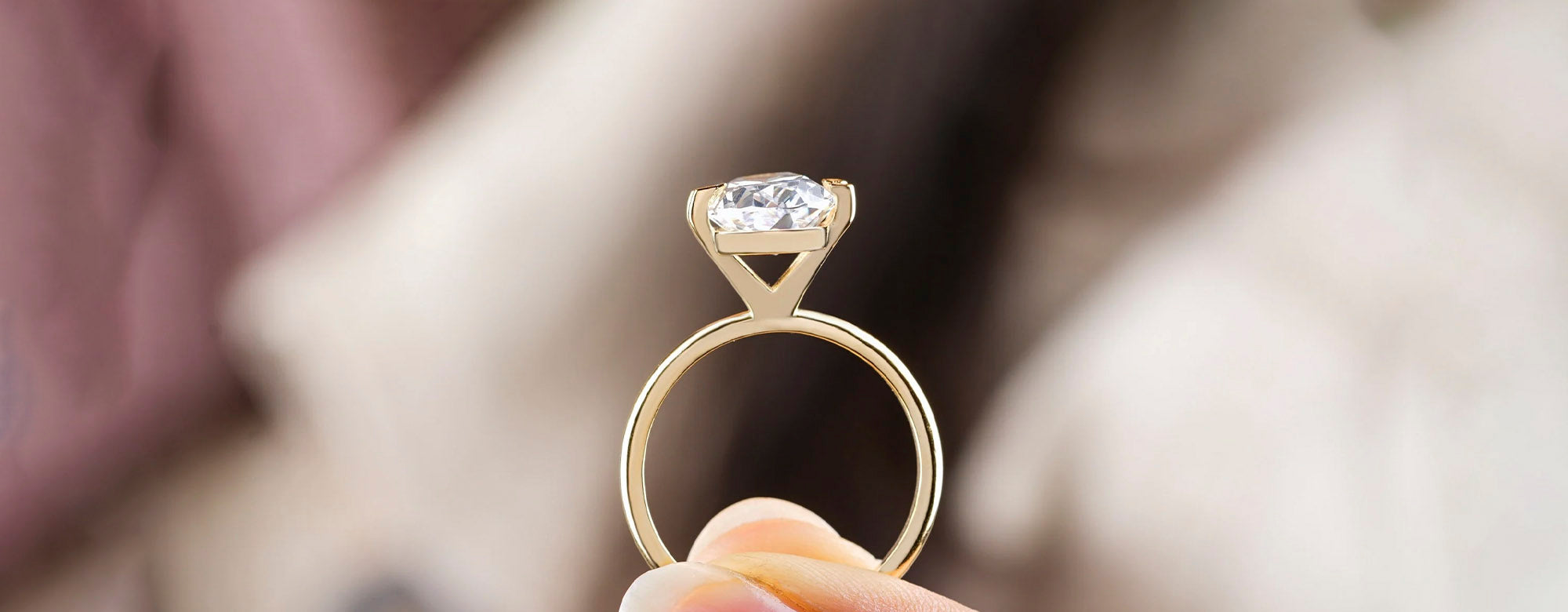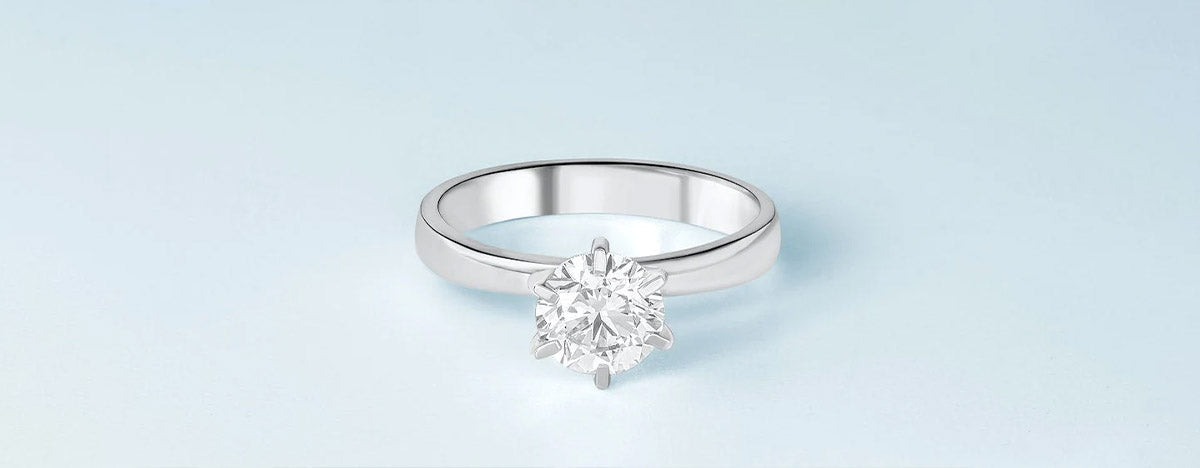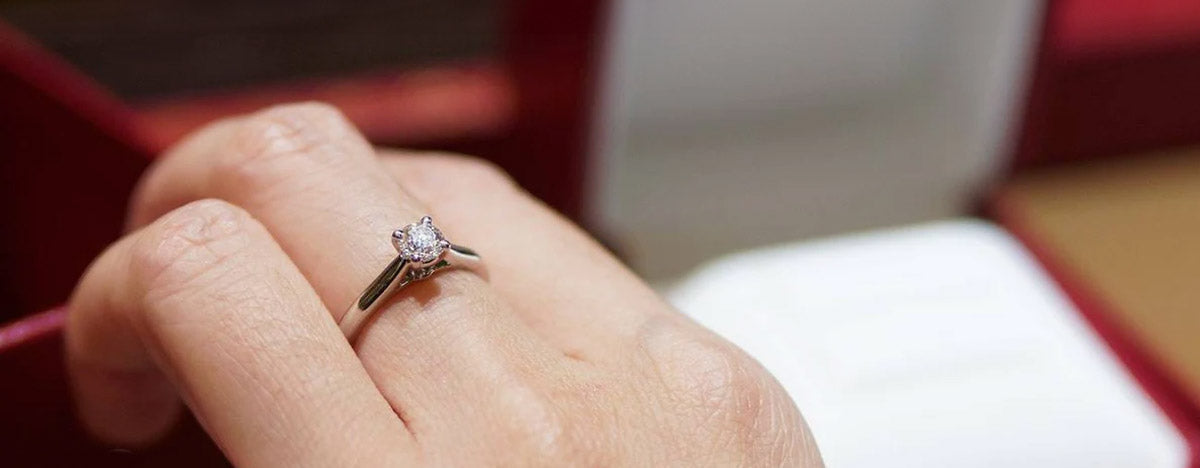
What Is A Simulated Diamond?
The rising popularity of gemstones like moissanite and cubic zirconia, which can appear similar to diamonds, makes this a confusing time for diamond shoppers. But make no mistake; synthetic diamonds, or diamond simulants, are not real diamonds. It's also important to note that lab-grown diamonds do not fall into the category of simulated diamonds, because lab-grown diamonds are actually real diamonds.
Simulated diamonds are gemstones that look similar to real diamonds, and can be an alternative to diamonds for couples on a budget. However, there are key differences and tell-tale signs that easily distinguish a real diamond from a stone that looks like a diamond at first glance.
What Are ‘Real’ Diamonds?
Diamonds are formed when pure carbon is exposed to extreme heat and pressure. Traditionally, these extreme conditions could only be found deep within the earth, but in the last several decades, new technology has emerged which replicates these conditions, making it possible for diamonds to be created in laboratories by skilled technicians.
Diamonds are prized for unique properties such as their hardness, which means they are highly durable and resistant to chipping or breakage. Another desirable feature diamonds possess is their unique brilliance and sparkle, which can be imitated but never perfectly replicated.

What Are Simulated Diamonds?
Simulated diamonds are gemstones that look like diamonds, but do not possess the same physical composition or unique brilliance as a diamond. Because a simulated diamond is not a real diamond, they carry a lower price than a real diamond, which is a large part of their appeal.
We'll take a look at some of the most popular simulated diamonds below.
Moissanite
Moissanite is popular for its rainbow-like sparkle, which is quite different from a diamonds bright white shine. Natural moisannite is made of a material called silicon carbide which is extremely rare, so most commercially available moissanite is made in a lab. While a diamond is a 10 on the Mohs hardness scale (which is the highest score), moissanite ranks at 9.25-9.5. This means moissanite can withstand the wear and tear of daily use and makes it suitable for use in an engagement ring. Lastly, like all diamond simulants, moissanites are drastically cheaper than diamonds when it comes to their pricing, which makes them an attractive diamond alternative to some.
Cubic Zirconia
Cubic Zirconia is a colourless gemstone made of zirconium dioxide. Like moissanite, all cubic zirconia jewellery is lab-created. Cubic zirconia is naturally colourless, comparable to a D-colour diamond, but a cubic zirconia won’t give off that same bright white sparkle that can be observed from a diamond that is placed under natural light. Because cubic zirconia is much less costly than a diamond, and appears very similar to a diamond at first glance, it can be a very tempting choice. It’s important to consider however that because cubic zirconia ranks at an 8.5 on the Mohs hardness scale, the stone is easy to scratch and the beauty of the stone will fade rapidly, while a diamond’s beauty will last forever.
White Sapphire
Although blue is considered the most valuable colour for sapphire, white sapphires are popular in their use as simulated diamonds. White sapphire can be mined or grown in a lab, just like diamonds. However, like other synthetic diamonds, white sapphires cannot compete with diamonds when it comes to brilliance and fire. Sapphires especially will display more of a soft ‘glow’ than a sparkle of any kind, which is something to be mindful of if that's the look you are going for. That being said, ranking at a 9 on the Mohs scale, sapphires are durable enough for daily wear, and won’t chip or break easily.
Are Lab-Grown Diamonds Simulated Diamonds?
In a word, no! Despite not being created naturally, lab-grown diamonds are still diamonds and it’s impossible to distinguish between a lab-grown diamond and a natural diamond by just looking at it, which isn't the case with diamond simulants. Carrying a lower price tag than natural diamonds, lab-grown diamonds can make a fantastic option for couples looking to save some money on their diamond purchase, without losing any of the optical or physical properties a diamond offers. Like a natural diamond, a lab-grown diamond will last forever.
Diamonds vs Simulated Diamonds: Which Is Better?
While this choice is largely a personal one, it can be helpful to consider the advantages and disadvantages of each option and how important they are to you.
Pros of Simulated Diamonds:
- Simulated diamonds are a more affordable option than diamonds for many people as they cost significantly less than real diamonds.
- Many simulated diamonds can offer desirable properties that closely replicate that of a diamond, such as sparkle and durability.
Cons of Simulated Diamonds:
- Although some simulated diamonds can appear similar to a diamond, when it comes to durability and that uniquely bright white sparkle, no other stone can compare to a diamond.
- It is possible to tell the difference between a diamond and a simulated diamond by anyone who recognises what a diamond is supposed to look like, which can be a downside if you haven't fully embraced your diamond simulant.
Final Thoughts
Are you interested in learning more about diamonds, lab-grown or natural, or diamond simulants? Talk to us on Facebook, Instagram, Twitter or in the comment section! You can also schedule an appointment to speak to one of our jewellery specialists either virtually or in-store to learn more.




